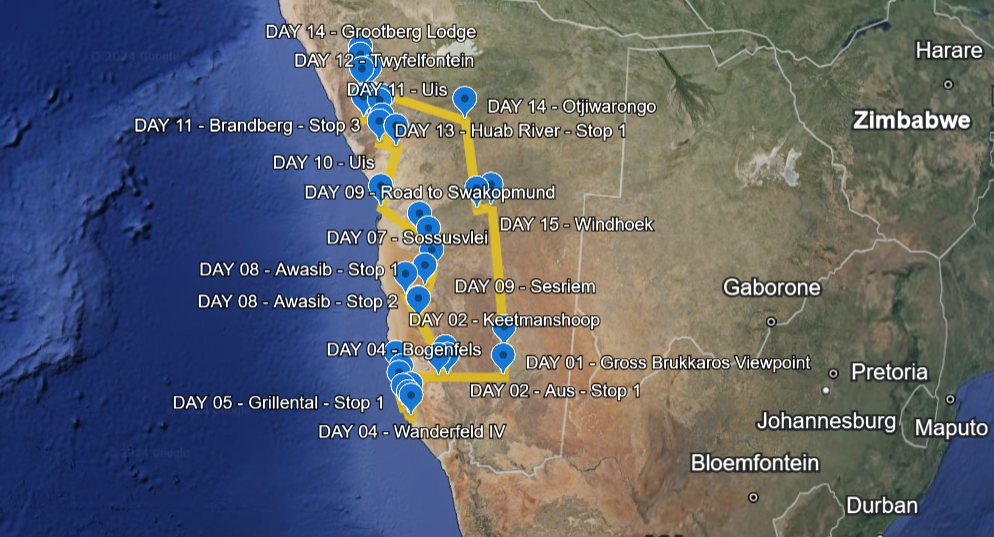Inside Africa

Fifteen doctorals students from the ITN S2S-Future project and fifteen European academic and industrial partners stayed in Namibia from May 5th to May 20th, 2023, to attend a training program on source-to-sink (S2S) approaches.
The objective of this two-week training trip in Namibia, called "Inside Africa," was to train fifteen doctoral students in the field of Earth and environmental sciences, focusing specifically on the dynamics of the Earth's surface and establishing connections between (1) erosion processes and sediment production (source) and (2) their transport to the final deposition site (sink). These studies, conducted at the scale of a watershed or a continent, are commonly known as source-to-sink approaches.

Namibia is a fantastic location for training doctoral students in the field of S2S approaches due to its exceptional geological outcrops (desert) and high geological diversity. The participants mainly focused on three aspects:
- Alluvial S2S systems of the Orange River and diamondiferous S2S systems (Sperrgebiet) with the assistance of two mining companies, Namdeb and Sperrgebiet Diamond Mining. This allowed the students to gain a better understanding of the industrial world's reality.
- Aeolian S2S systems through a comparison between the modern systems of the Namib Desert and the two fossil systems from the Miocene (Namib) and the Lower Cretaceous (Twyfelfontein) with the assistance of Laurie Barrier (IPGP/Paris Cité).
- The growth of anorogenic relief (escarpment, plains, and plateaus) in response to glaciation (Upper Paleozoic glacial period), oceanic opening (Great Parana-Etendeka igneous province), and mantle-controlled uplift (Southern African Plateau).

This intensive training allowed the doctoral students to become familiar with Namibia's specific geological and geomorphological environments. They had the opportunity to gain valuable field experience and deepen their knowledge of S2S processes. Additionally, the European partners present were able to share their expertise and research, sparking exciting discussions and debates.




